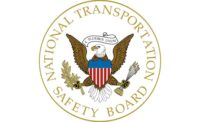Relying on visibility a factor in fatal Alaska plane crash

A flight crew’s decision to continue using visual flight rules when visibility was deteriorating due to weather conditions was a major factor in the October 2016 crash of an airplane near Togiak, Alaska that killed both pilots and the passenger.
That’s the conclusion of the National Transportation Safety Board’s (NTSB) investigation into what happened to Terrain Hageland Aviation Services’ Flight 3153. The Cessna 208B’s crash into steep, mountainous terrain about 10 nautical miles northwest of the Togiak Airport killed all three people on board and destroyed the aircraft.
Instruments needed at time of crash
The scheduled commuter flight was being operated under visual flight rules (VFR), under the provisions of Title 14 Code of Federal Regulations (CFR) Part 135. The NTSB investigation determined that instrument meteorological conditions (IMC) were likely in that vicinity at the time of the accident.
An additional factor was the flight crew’s failure to perform an immediate escape maneuver after entry into instrument meteorological conditions, which resulted in controlled flight into terrain (CFIT).
Other factors
Contributing to the accident were (1) Hageland’s allowance of routine use of the terrain inhibit switch for inhibiting the terrain awareness and warning system alerts and inadequate guidance for uninhibiting the alerts, which reduced the margin of safety, particularly in deteriorating visibility; (2) Hageland’s inadequate crew resource management (CRM) training; (3) the Federal Aviation Administration’s (FAA) failure to ensure that Hageland’s approved CRM training contained all the required elements of Title 14 Code of Federal Regulations 135.330; and (4) Hageland’s CFIT-avoidance ground training, which was not tailored to the company’s operations and did not address current CFIT-avoidance technologies.
Looking for a reprint of this article?
From high-res PDFs to custom plaques, order your copy today!





